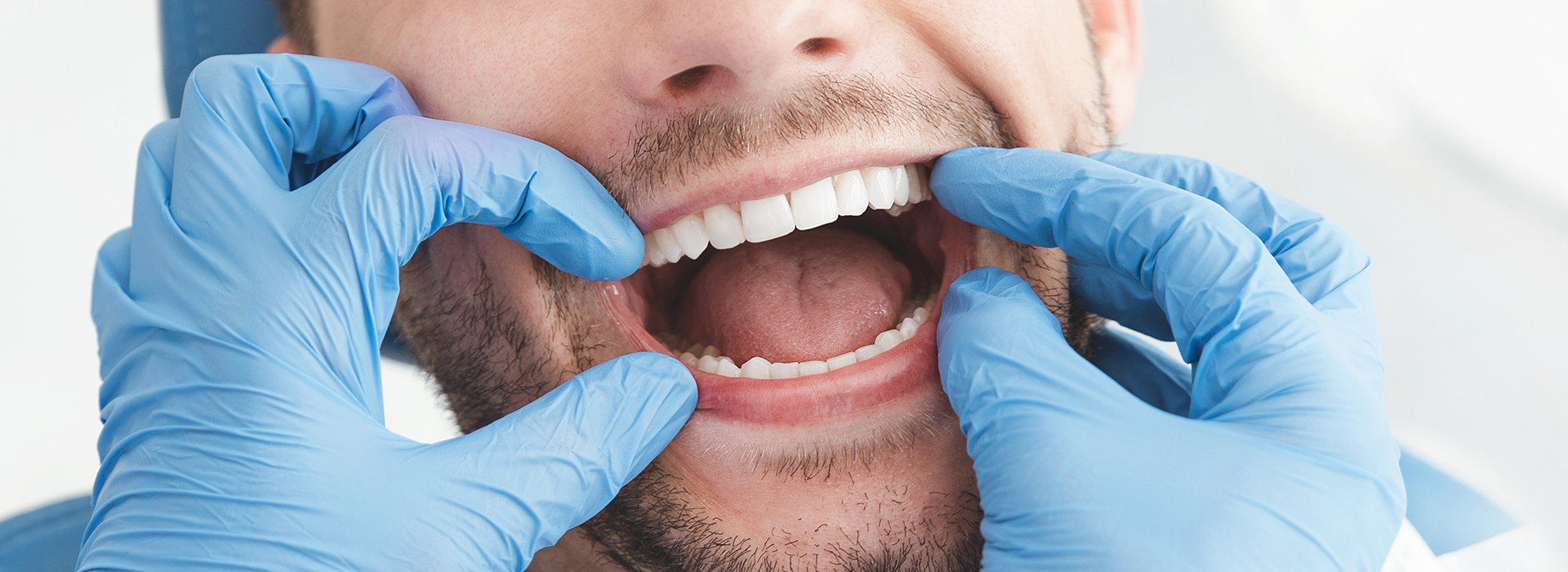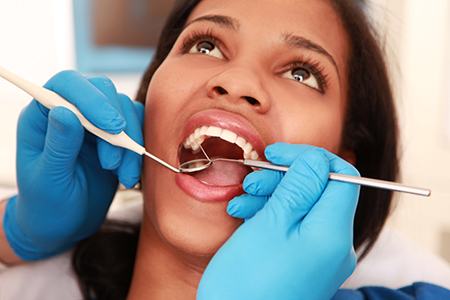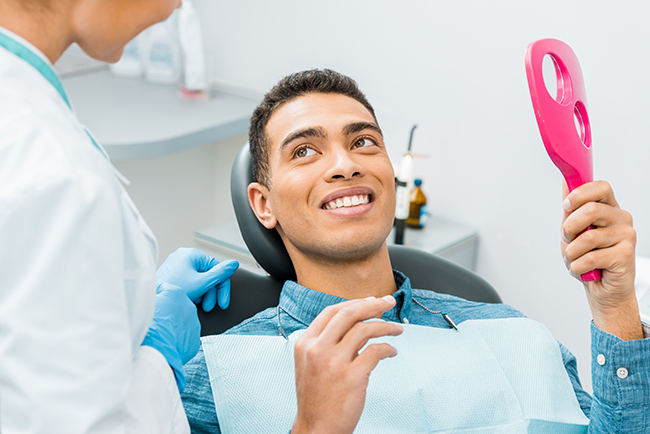At the office of Cruzin' Dental, we take a preventive-first approach to oral health because catching small problems early is the best way to protect your smile over the long term. Regular oral exams give our clinicians a chance to evaluate not only teeth and gums but also the way your bite functions and how oral health ties into your overall well‑being. Alongside professional cleanings and targeted screenings, these visits are an opportunity for clear guidance and practical steps that help you and your family stay healthy between appointments.
Our exams are designed to be efficient, thorough, and tailored to each patient’s needs. Whether you're visiting with an established history or coming in for the first time, we focus on gathering the information that matters most: medical and dental history, current concerns or symptoms, and any factors—like medications or habits—that could affect oral health. From there we use a combination of visual inspection, diagnostic imaging, and careful evaluation to create a clear picture of your situation and the best path forward.
Preparing for Your First Comprehensive Exam
Your initial comprehensive exam sets the baseline for all future care. We begin by reviewing your medical history and any medications, as these details can influence oral health and treatment choices. You’ll have a chance to describe any symptoms—sensitivity, discomfort, dry mouth, or changes in chewing—and our team will note lifestyle factors like diet or grinding that can affect tooth wear and gum health.
The clinical part of the exam includes a full-mouth visual inspection, assessment of gum health, and evaluation of bite (occlusion) and jaw joint (TMJ) function. We also perform an oral cancer screening as part of this thorough evaluation. When appropriate, we recommend diagnostic x-rays or other imaging to reveal conditions that can’t be seen with the naked eye, such as early decay between teeth, bone loss, or issues beneath existing restorations.
After collecting all findings, we discuss what they mean in straightforward terms and outline any recommended next steps—whether that’s preventive care, a conservative repair, or monitoring over time. Our goal with the first visit is to leave you informed, comfortable, and confident about your care plan.
Oral Health and Whole-Body Connections
Oral health does not exist in isolation. In many cases, signs that first appear in the mouth can reflect conditions elsewhere in the body. During an oral exam we look for indicators—such as persistent inflammation, unusual lesions, or changes in the soft tissues—that may warrant further medical evaluation. Recognizing these signs early can help patients and their physicians investigate possible systemic causes.
Medical research increasingly shows links between oral disease and broader health concerns. Chronic gum inflammation, for example, has been associated with cardiovascular conditions and may complicate blood sugar control in people with diabetes. Conversely, systemic illnesses and certain medications can produce oral symptoms like dry mouth, ulcerations, or increased susceptibility to infection.
Because the mouth can mirror general health, routine exams play a preventive role beyond cavity detection. If we observe signs that suggest a possible systemic issue, we’ll communicate our findings clearly and recommend that you follow up with your primary care provider or a specialist. Coordinated care helps ensure that both oral and overall health needs are addressed.
Why Regular Cleanings and Exams Matter
Consistent professional care is one of the most effective tools for keeping dental disease at bay. Even diligent home hygiene can miss plaque and tartar that accumulate in tight spaces; a trained hygienist can remove these deposits and polish the teeth to reduce staining and bacterial buildup. These visits also allow us to monitor changes over time and address small issues before they become complex.
We typically recommend routine checkups and cleanings at intervals based on individual needs—often every six months for many patients, though some people benefit from more frequent visits. During these appointments we assess gum health, check for new decay, and provide personalized coaching on brushing, flossing, and other habits that support a lasting, healthy smile.
For children and adolescents, routine visits are doubly important: they protect developing teeth and help establish lifelong habits. We also watch growth patterns and tooth alignment so that orthodontic needs, if any, are identified early. Our team aims to make each visit productive and educational, so patients leave feeling empowered to maintain their oral health between appointments.
At Cruzin' Dental, we pair compassionate care with practical education—helping families create routines that keep smiles healthy for years to come.
Seeing Below the Surface: What Dental X-Rays Reveal
X‑rays are an essential part of a thorough oral exam because they reveal structures that a visual inspection cannot. Radiographs help detect early tooth decay between teeth, assess the level of bone supporting the teeth, and identify issues with the roots or surrounding bone. When used appropriately, they are a precise diagnostic tool that guides safer, more effective treatment decisions.
Modern dental imaging is faster and uses far less radiation than older film-based methods. Digital radiography, in particular, provides immediate images that can be magnified and enhanced for clearer evaluation. These images are stored in the patient’s electronic record so they can be compared over time and shared with other providers when collaboration is needed.
For complex cases, three-dimensional imaging such as cone-beam computed tomography (CBCT) offers additional detail. CBCT is especially valuable for surgical planning, implant placement, and assessment of anatomical structures that affect treatment. We recommend imaging selectively, choosing the type that best answers the clinical question while prioritizing patient safety.
How Different X-Ray Types Support Diagnosis and Care
Different imaging techniques serve distinct diagnostic purposes. Small intraoral films focus on individual teeth or sections of the mouth, while larger panoramic or CBCT scans provide an overview of the entire dental and jaw anatomy. Selecting the right image depends on the clinical need—whether we’re checking a single tooth, planning restorative work, or evaluating growth and development.
-
Periapical x-ray - Captures an entire tooth from crown to root, useful for evaluating root health and surrounding bone.
-
Bitewing x-ray - Provides detailed views of the crowns of the back teeth to detect decay between teeth and monitor bone levels.
-
Full Mouth Series - A collection of images that together show all teeth and adjacent bone for comprehensive assessment.
-
Panoramic Film (panorex) - Gives a broad, two-dimensional view of the jaws, teeth, and surrounding structures, useful for impacted teeth and general screening.
-
Cephalometric Film - A side-view image used primarily in orthodontic planning to evaluate facial and jaw relationships.
By combining the appropriate imaging with a thorough clinical exam, our team can detect issues earlier, plan treatments with greater precision, and monitor outcomes over time. Whether a simple intraoral film or an advanced 3D scan is called for, we explain the purpose of the image and how it will inform your care.
In summary, regular oral exams are more than a quick check—they’re a comprehensive strategy for preventing disease, protecting overall health, and preserving a confident smile. If you have questions about what to expect at your next exam or would like more information about the screening and imaging options we use, please contact us for more information.







